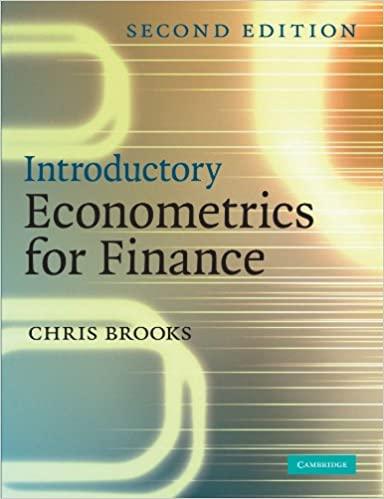Question
Bombardier's Beta was 2.30 and the Market Risk Premium was 5.23 per cent. Shin Lee set out to calculate the weight of equity for Bombardier
Bombardier's Beta was 2.30 and the Market Risk Premium was 5.23 per cent. Shin Lee set out to calculate the weight of equity for Bombardier based on the closing share price as of December 31, 2019. Share price information was below. By looking at the 2019 Annual Report, Lee could determine the number of shares outstanding of both preferred and common shares and exchange rates. The exchange rate is important because the values in the Annual Report are in USD whereas the share prices are in CAD. He will need then to convert the USD values to CAD. He assumed the company's effective tax rate was 19.13 per cent (an average of the last 4 years that Bombardier had a positive tax rate). For the same day, December 31, 2019, Lee researched the Canadian 10-year bond yield at the Bank of Canada, which would be necessary in calculating the cost of equity for Bombardier. He found that this yield was 1.70%. Lee expected to incorporate the range of preferred shares and their most recent dividend payouts into his cost of capital calculations. He assumes that the growth rate of the preferred shared dividends is zero. When calculating the cost of debt, he would include the company's long-term debt. For the debt that has no value for December 31st, 2019 (it is represented as a dash) he assumes that the market value is 0 (i.e., it has been paid off). He further assumed that the amounts of long-term debt of the Annual Report (the column with header December 31st, 2019) were the best estimates of the market values in USD. Finally, Lee's research on Bloomberg gave him the bond prices for all of Bombardier's long term debt (see Table 1; the face value is 100). The bond prices are necessary for the computation of the YTM of each bond with the exception of the "Other" entry, the cost of current or non-current for December 31st, 2019 was explained in a footnote (see page 199 of the Annual Report). One issue is how to handle fractional years for bond maturities. For simplicity, he decided to round the number of periods down when computing the YTM of each bond (for the December maturity it is assumed to be at the end of the month so there is no need to round down). So, for example, for the May 2021 bond he assumed it has 2 semi-annual periods to maturity. Using his knowledge of finance, he sat down to punch the numbers and calculate Bombardier's WACC.
Table 1 - Bombardier Bond Prices as of December 31, 2019
| Note | Price |
| May-21, 6.13% | $104.30 |
| Dec-21, 8.75% | $109.84 |
| Mar-22, 5.75% | $103.24 |
| Oct-22, 6% | $100.06 |
| Jan-23, 6.13% | $102.55 |
| Dec-24, 7.5% | $105.400 |
| Mar-25, 7.5% | $102.55 |
| Apr-27, 7.88% | $103.50 |
| May-34, 7.45% | $95.00 |
| Dec-26, 7.35% | $101.48 |
Step by Step Solution
There are 3 Steps involved in it
Step: 1

Get Instant Access to Expert-Tailored Solutions
See step-by-step solutions with expert insights and AI powered tools for academic success
Step: 2

Step: 3

Ace Your Homework with AI
Get the answers you need in no time with our AI-driven, step-by-step assistance
Get Started


